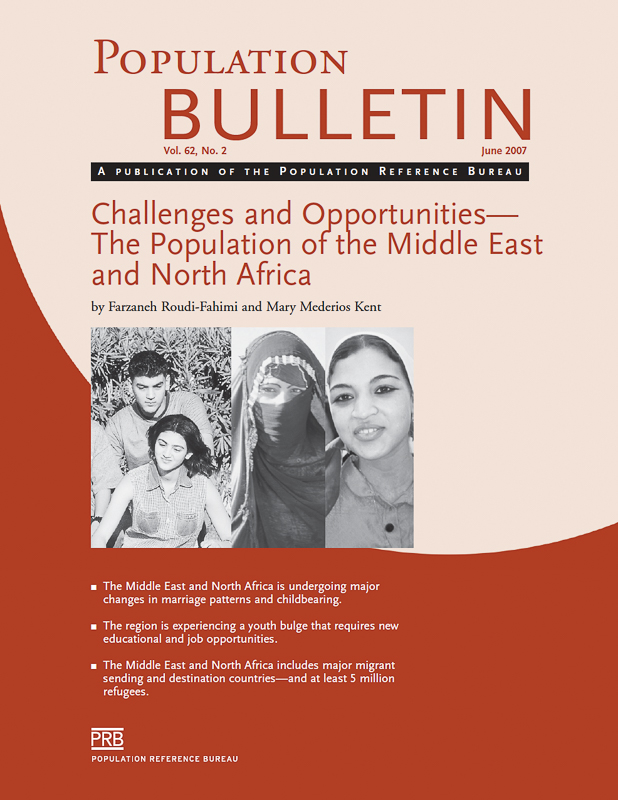
Population Bulletin Vol. 62, No. 2: Challenges and Opportunities—The Population of the Middle East and North Africa
The countries of the Middle East and North Africa (MENA) continue to fascinate and concern the rest of the world.
With two-thirds of the world’s known petroleum reserves, the region’s economic and political importance far outweighs its population size. It has the world’s second-fastest growing population, after sub-Saharan Africa. Its demographic trends—especially the rapidly growing youth population—are complicating the region’s capacity to adapt to social change, economic strains, and sometimes wrenching political transformations.
The people of the Middle East and North Africa have long played an integral, if sometimes volatile, role in the history of human civilization. Three of the world’s major religions originated in the region—Judaism, Christianity, and Islam. MENA contains some of the world’s oldest cities; universities existed here long before they emerged in Europe. Today, the population is overwhelmingly Islamic, yet includes substantial Jewish and Christian minorities. And, while Arabic is the predominant language, two of the region’s largest countries—Iran and Turkey—and Israel, are not Arabic-speaking.
Thanks to rapidly declining death rates and slowly declining fertility rates, MENA’s population size quadrupled in the last half of the 20th century. It stands at about 430 million in 2007. Despite recent fertility declines, MENA’s population is projected to surpass 700 million by 2050.
One consequence of the region’s recent demographic trends is an increasingly notable youth bulge. One in every three people living in the region is between ages 10 and 24. This young population provides momentum for continued population growth in the region, despite declining fertility.
This large crop of young people also needs jobs and training—in a region currently plagued by high unemployment. While the youth bulge offers a potential demographic dividend—a temporary surge in the pro-portion of working-age adults in the population that can boost economic growth—there are many obstacles to reaping this windfall. High unemployment, a mis-match of jobs and skill levels, extensive government entitlements, and political instability are among the factors that have made it difficult for the young MENA population to spur economic growth. In addition, citizens must compete with foreigners for jobs in some Persian Gulf countries where one-half or more of the labor force consists of foreign workers.
Whether this large group of young people become healthy and productive members of their societies will depend on how well governments and civil societies invest in social, economic, and political institutions that meet their needs. The fastest growth in the youth population will be in places that are the least prepared economically: Iraq, the Palestinian Territory, and Yemen.
Population growth has also exacerbated natural resource constraints in the region. Most MENA countries already are designated as water scarce because they fall below the international threshold of 1,000 cubic meters of freshwater per capita per year. Environmental factors threaten the region’s continued economic development and the well-being of the population. Water scarcity can potentially lead to conflicts both among countries and among population groups within a country, adding to the political instability of the region.

